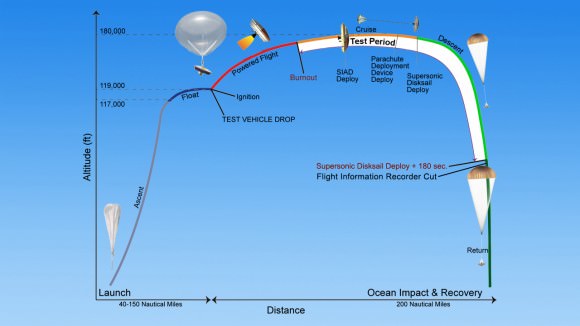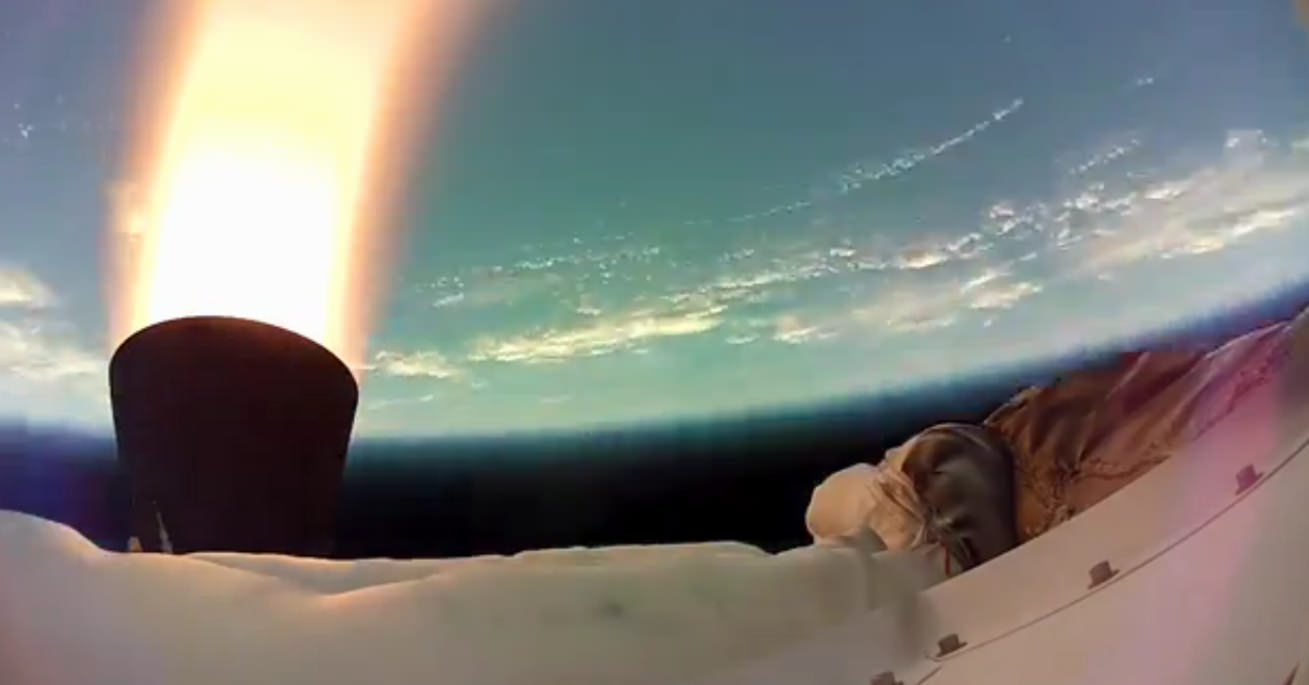Feeling dizzy? This is what the view looked like from NASA’s next-generation Mars spacecraft as the flying saucer-shaped vehicle did a test in June.
According to the agency, the Low-Density Supersonic Decelerator (LDSD) met all of its test objectives even though the parachute didn’t deploy as planned. And in a briefing today (Aug. 8), agency officials said they have a plan to deal with the issue for the next flight, which will be in summer 2015.
“We are going to change the shape. We are going to have some structural reinforcements to make it stronger in areas that it is particularly sensitive, to
improve deployment of parachute,” said Ian Clark, the principal investigator of LDSD at NASA’s Jet Propulsion Laboratory.
With every robotic Mars mission, it appears, NASA is trying to land bigger and bigger payloads on the surface of the planet. That’s because the rovers have become more powerful over time. The latest vehicle, the Mars Science Laboratory (better known as Curiosity) included a unique crane system that was so innovative that NASA dubbed the final landing sequence “seven minutes of terror.”
The LDSD test in late June saw the craft soar to 120,000 feet (36,576 meters). The vehicle was then cut from the balloon at this altitude, which has densities similar to what you would expect in the upper Mars atmosphere, to see how it would do during a simulated descent to the Red Planet.
“We’re really happy. We have tons and tons of data,” said Mark Adler, the project manager for LDSD at JPL. “Nothing makes us happier than data.”
Besides the busted parachute, officials said the test showed the vehicle was performing to expectations — and sometimes, even better than expected. The shape held within 1/8 of an inch (0.32 cm), which they said was very good for a 20-foot (6-meter) vehicle. Drag and stability happened as they thought. The balloon that deployed the parachute also did well, they said.

The parachute, however, developed tears very close to the beginning of its deployment, which officials said was due to a lack of understanding about how parachutes perform at supersonic velocities.
While the LDSD has not been assigned to a particular mission yet, officials said it would be useful to land missions more accurately on the Red Planet in spots that would be more difficult to reach. It also would be useful for a future human mission, whenever that happens, because the equivalent of “two-storey condominiums”would be needed, said Adler.
The project has been in the works since September 2010, and this summer’s test occurred a year ahead of schedule.


You have to love the old ‘Rockoon’ : D
In fact….I dont think Ive seen a Rockoon even mentioned as a project, in Kerbal Space Program yet…though Im certain some bright spark has at least explored the possibilities…it being a well known and venerable method of reducing launch costs by making it possible to fire the first stage at 10s of thousands of feet.
Im not sure how the KSPengine (sadly limited by the Unity Engine….as impressive as it is in many aspects) will deal with balloon/buoyancy in air physics..in particular in conjunction with a large dead weight and subsequent ‘launch’ of said weight.
An interesting project for somebody though Im sure.
Im off to see what has been tried already : D
What happened to all the mylar of that balloon? That’s a whole lot of thin sheet plastic!
Did it eventually lose its buoyancy, settle back to earth, and smother the dolphins?